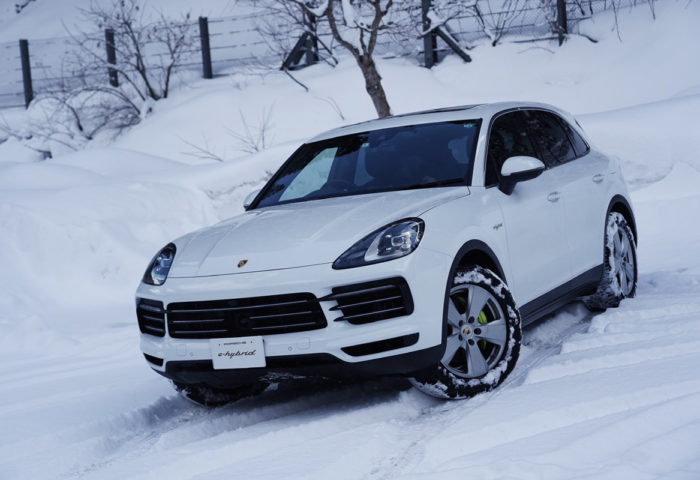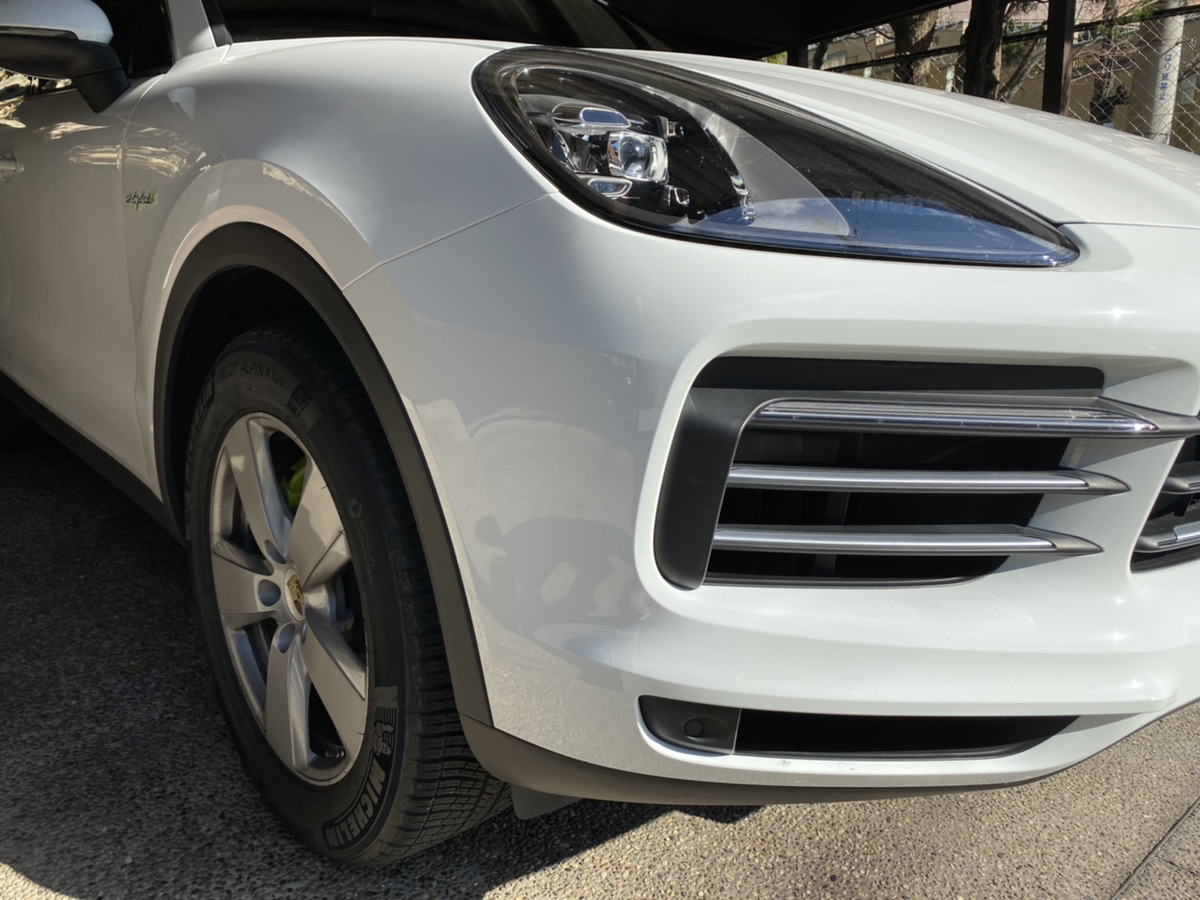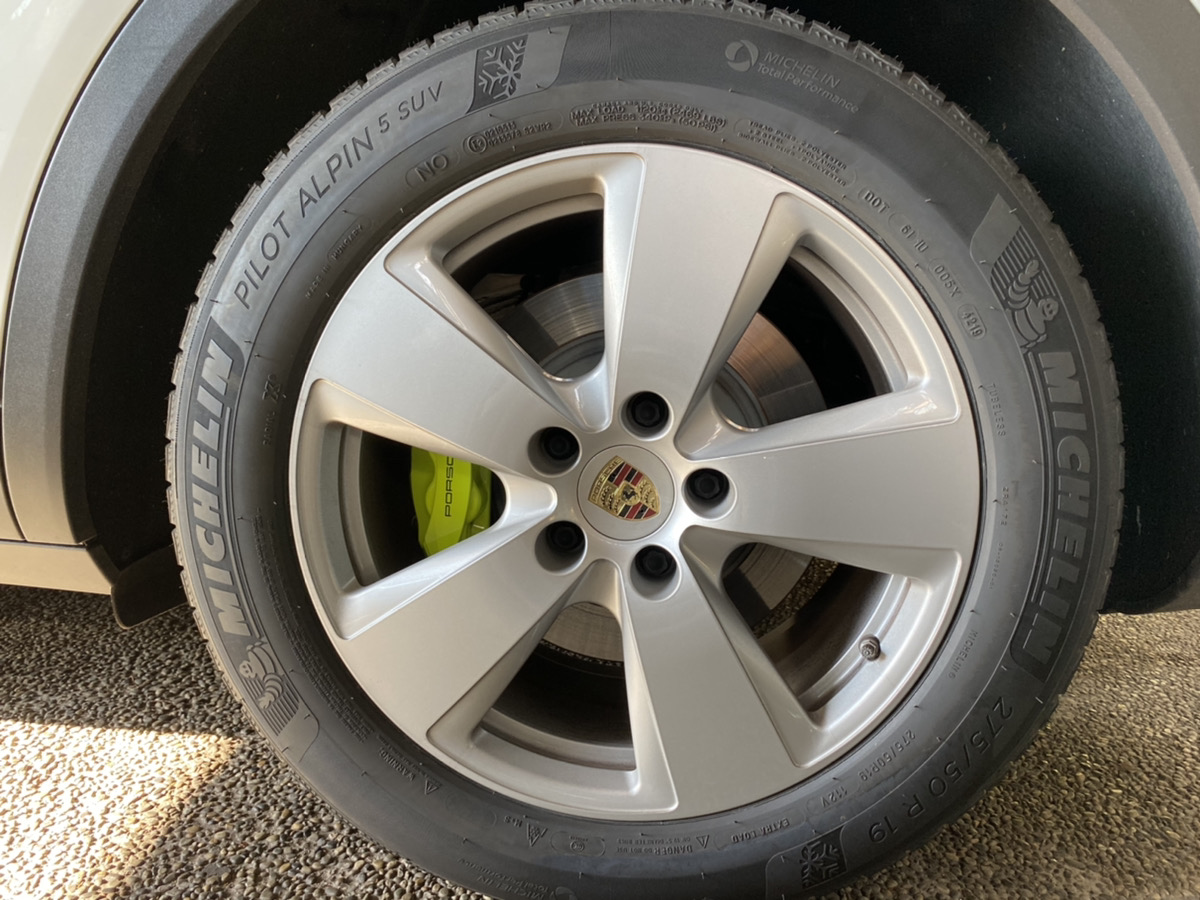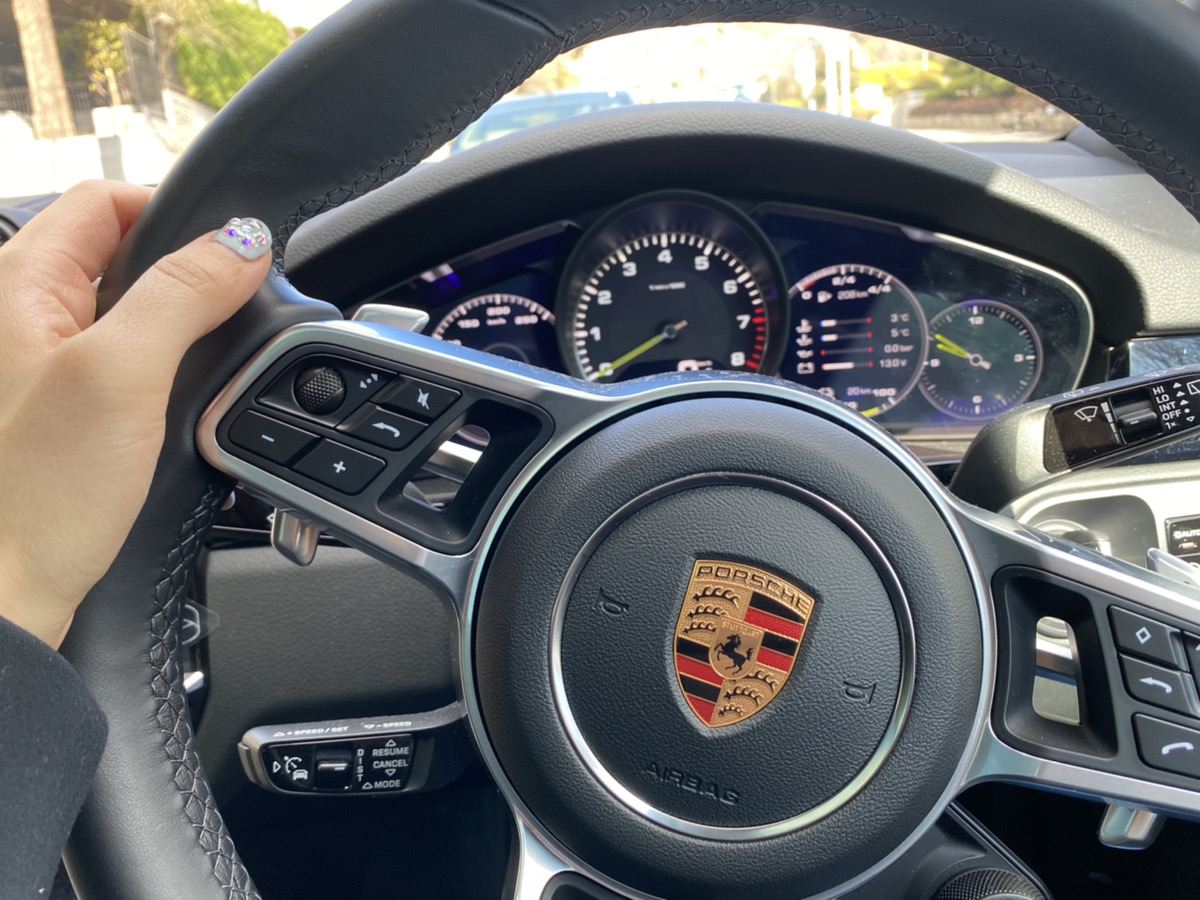How Do Winter Tires Perform? Driving the Cayenne on Snowy Roads and Winter Highways
公開日:2021.02.12

Cayenne Equipped with Winter Tires
The other day, our Cayenne E-Hybrid was switched to winter tires. To test their performance, we headed north on a day when the northern weather forecast predicted snow, and my husband also tried driving on the Royu Driveway on a snowy day. Here’s our report.

Ride Comfort and Driving Feel of Winter Tires
Our Cayenne’s summer tires are mounted on 20-inch wheels, but the winter tires are on 19-inch wheels.
The tires are Michelin Pilot Alpin 5 SUV.

Perhaps because of the 19-inch wheels, the initial acceleration feels very light. Even with summer tires, the Cayenne feels nimble without the weight of the motor and battery being noticeable, but with winter tires, it feels like riding a much smaller, lighter car.
At the same time, the ride is smooth and very comfortable. I expected studless tires to feel rough and bumpy, but winter tires that handle dry and wet conditions really are different.
I felt the ride comfort was no different from summer tires.
My husband said,
The ride definitely changes when the tire size is different. When riding with the family, I don’t notice it much, but driving alone, it feels almost like driving a Macan—very sporty.
The smoothness remains, but it feels lighter.
In the city, the feeling is basically the same as summer tires. When I used to drive an Audi A3 and switched to studless tires, they made a loud noise and the ride got mushy and uncomfortable, but winter tires don’t do that at all.
They have good stiffness, and even when pushing the curves on the Royu Driveway a bit, they don’t give in at all. This feeling is very refreshing for Japanese users used to studless tires. In fact, on winter roads close to 0°C, they grip better than summer tires, so I feel very confident on winter winding roads.
Personally, I’m still not used to the usual grinding noise when turning the wheel slowly on cold winter mornings, so I was most impressed that the grinding noise disappeared the moment we switched to winter tires (laughs).
Summer tires really do get very hard in low temperatures. No wonder cold summer tires are dangerous.

Driving on the Highway with Winter Tires
Next, when driving on the highway, I felt that road noise was slightly louder compared to when using summer tires.
Our Cayenne is usually very quiet on the highway, with no noticeable road or wind noise, so this was a bit more noticeable.
However, it was not unpleasant, and there was no need to raise our voices to have a conversation—it was comfortably “quiet enough.” At lower speeds in the driving lane, it was almost unnoticeable, but when joining the faster flow in the passing lane, road noise was about 10% louder than with summer tires.
Regarding handling, the difference from summer tires was honestly hard to tell. Lane changes and cornering felt just as smooth as usual. Even when changing lanes mid-corner as a test, there was no mushy feeling, and the car responded exactly as expected.
My husband said about highway driving,
I think European winter tires are really capable tires. They’re worlds apart from studless tires. Probably, if you didn’t know, few would realize these are winter tires.
High-speed stability is outstanding. Straight-line stability is unchanged, and even on tighter high-speed corners, there’s no feeling of the car losing composure. Well, it makes sense—without tires this solid, you couldn’t drive on the winter Autobahn.
The main difference from summer tires is probably just that road noise is a bit louder at very high speeds.
| Next page → Heading further north in the Cayenne in search of snow! |
このブログが気に入ったらフォローしてね!


Comment ( 0 )
Trackbacks are closed.
No comments yet.